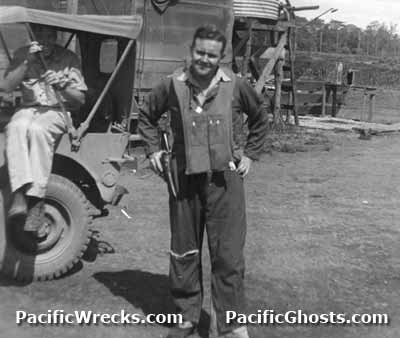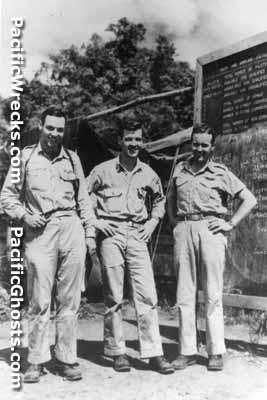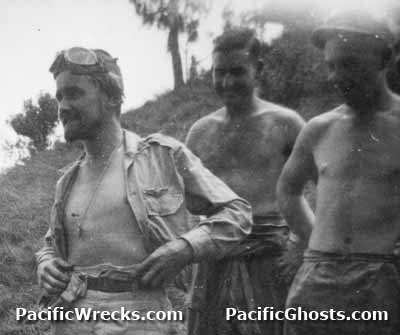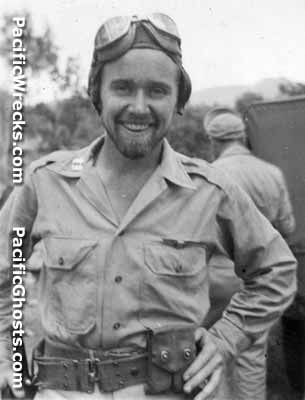In memory: Charles P. Sullivan passed away September 20, 2013.
Background
Charles Peter O'Sullivan was born July 31, 1915 in Eureka, Illinois. He attended Northwestern University and graduated with a degree in business administration.
In 1973, he changed his surname to O'Sullivan.
Wartime History
On February 12, 1941 he enlisted in the U.S. Army as an aviation cadet with serial number 16017915. He learned to fly at the Spartan School in Tulsa, Oklahoma followed by Randolph Field in San Antonio, Texas. Finally, at Brooks Field in Brooks, Texas. On September 21, 1941 he earned his wings and was commission as a 2nd Lieutenant. Afterwards, transferred to Mitchell Field, New York.
During early 1942 sent overseas to Australia. Assigned to the 35th Fighter Group (35th FG), 39th Fighter Squadron (39th FS) flying the P-39 Airacobra and P-400 Airacobras from Port Moresby.
On June 17, 1942 took off piloting a P-400 Airacobra and claimed a G4M1 Betty over Port Moresby, his first aerial victory claim.
Afterwards, the 39th Fighter Squadron converted to flying the P-38 Lightning.
On January 6, 1943 piloting a P-38, 1st Lt. Sullivan claimed a Ki-43-I Oscar near Gasmata.
On March 3, 1943 piloting a P-38 during the Battle of the Bismarck Sea shot down on a A6M Zero over Lae. On March 4, 1943 piloting a P-38 he claimed an A6M Zero probable over the Huon Gulf.
On April 12,
1943 took off piloting a P-38 to intercept the last major Japanese air raid over Port Moresby and claimed a G4M1 Betty bomber shot down, his fourth victory claim.
On July 26, 1943 he claimed a Ki-43 Oscar over Lae, his fifth victory claim and became an ace.
On September 20, 1943 took off piloting P-38H "Mareelee II" 42-66851 leading a four plane flight of sixteen P-38s escorting B-24 Liberators over Wewak. South of Wewak, he experienced engine trouble and was about to abort the mission. Turning back for base, his engine returned to normal and he rejoined the formation. Suddenly, he spotted an enemy fighter in his rear view mirror that opened fire before he could evade the gunfire that damaged the left engine but he was able to escape into a cloud. Flying back on one engine, he experienced problems with the right engine and force landed behind enemy lines. Afterwards, he trekked in the jungle until he found local people and was taken to their village but after an altercation shot two natives who he believed were going to kill him and flew for another two weeks. He encountered an Australian Army patrol and was taken to Dumpu and flown to Port Moresby where he rejoined the squadron on October 20, 1943, exactly 30 days after force landing.
Aerial victory claims
Sullivan was officially credited with five aerial victories making him an ace plus a probable between June 17, 1942 to July 26, 1943.
Postwar
Sullivan continued in the military and joined the U.S. Air Force (USAF). In 1968, he retired after nearly thirty years of service with the rank of Colonel. In 1973, he changed his family name to O'Sullivan. During September 1993, he learned that a pair of Australian aviation enthusiasts had rediscovred, almost to the day, the remains of his P-38H "Mareelee II" 42-66851 he force landed on September 20, 1943.
Memorials
O'Sullivan passed away on September 20, 2013 at age 98. Afterwards, he was cremated and has no memorial marker.
References
NARA World War II Army Enlistment Records -
Charles P. Sullivan
USAF Historical Study No. 85 USAF Credits For The Destruction of Enemy Aircraft, World War II Alphabetical: Sullivan Charles P. page 183 (PDF page 190)
News "Crash In Jungle: Given Up For Dead" Sydney, October 29, 1943
Faith, Determination and a Bit of Irish Luck by Charles O'Sullivan
FindAGrave - Col Charles P. O'Sullivan (photos, obituary)
Contribute Information
Do you have photos or additional information to add?







